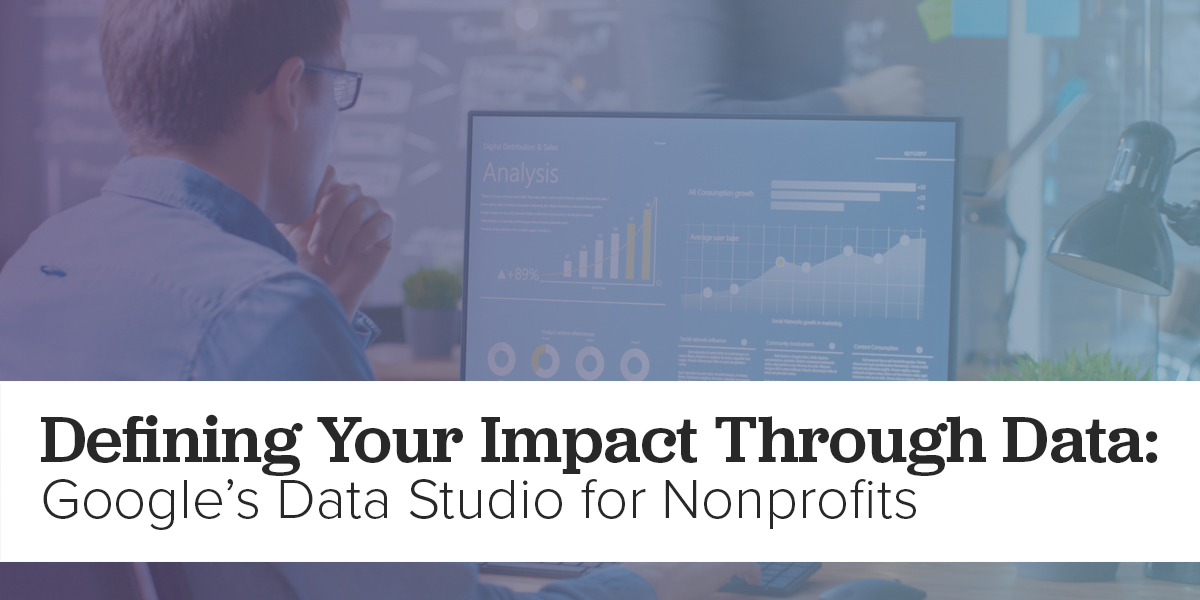Defining Your Impact Through Data: Google’s Data Studio for NonProfits
Ilia Jones | September 2021

Determine Your Metrics
Before you get too far into designing scorecards or other data visualizations, it’s helpful to take a critical look at the data and metrics you’re collecting and tracking. It can be easy to fall into the trap of thinking more data is better. Or that any metric can show growth, but that’s not always the case.
Review the metrics you’re tracking to see if they are actually indicators of growth or sales. This will help simplify things when you start to design your data visualization.
Some examples of metrics that are good to track:
- A specific action on your website that shows the “conversion” of a site visitor, such as signing up for your newsletter or donating to your cause.
- Recurring donations by community members, such as signing up for monthly contributions or multiple donations throughout the year.
- Site visitors that are signing up to be volunteers for the first time or tracking repeat volunteers.
Your mission and your nonprofit organization are unique, so the metrics you’re tracking may also be specific to you. Think about what you can track that shows more than just growth of web traffic, rather the actions taken by those site visitors.
Data Studio Terms to Understand
There are a few terms used by Google Data Studio that can be helpful to familiarize yourself with before you dive in.
Dashboard – Your Data Studio dashboard is your home base within the tool. It provides an overview of your reports and collects them all in one place.
Report – Reports are what you create in the Data Studio. These reports pull data from different sources, so you can create tables, charts and other visualizations and combine them into dashboards or scorecards that show the progress you’re making.
Data Sources – These are collections of data that you’re tracking through things like Google Ads, Google Analytics or custom website tags.
Define Your Audience
Just like you define and explore your ideal audience for marketing purposes, you need to consider who the audience is for your reporting. Does your nonprofit organization have a board of directors? Perhaps your marketing leadership would like to see a weekly report to track progress?
After you’ve determined the audience for your report or reports, then drill down and select precisely what they want to see. For example, your marketing leadership may want to see how web traffic ebbs and flows day to day or month by month. Of they may want data on a specific marketing campaign. Whereas your board may want to see more financial information, such as the ROI on digital ad spend and how that’s impacted donation rates.
You will probably find that you have multiple audiences that are interested in reports at differing intervals. Because of this, you will likely create several different reports using the same data sources.
Utilizing Data Studio to Create Meaningful Reports
At the end of the day, data is meaningless unless it tells a story. Google Data Studio can help you take the raw data you’re collected through analytics and tags and turn it into a beautiful presentation. The reports you create will help explain what your nonprofit is doing and how your marketing efforts are helping to achieve your mission.
Data Studio may take some time and experimentation to learn. But once you get the hang of it, you will recognize the benefit of having such a robust reporting tool.
